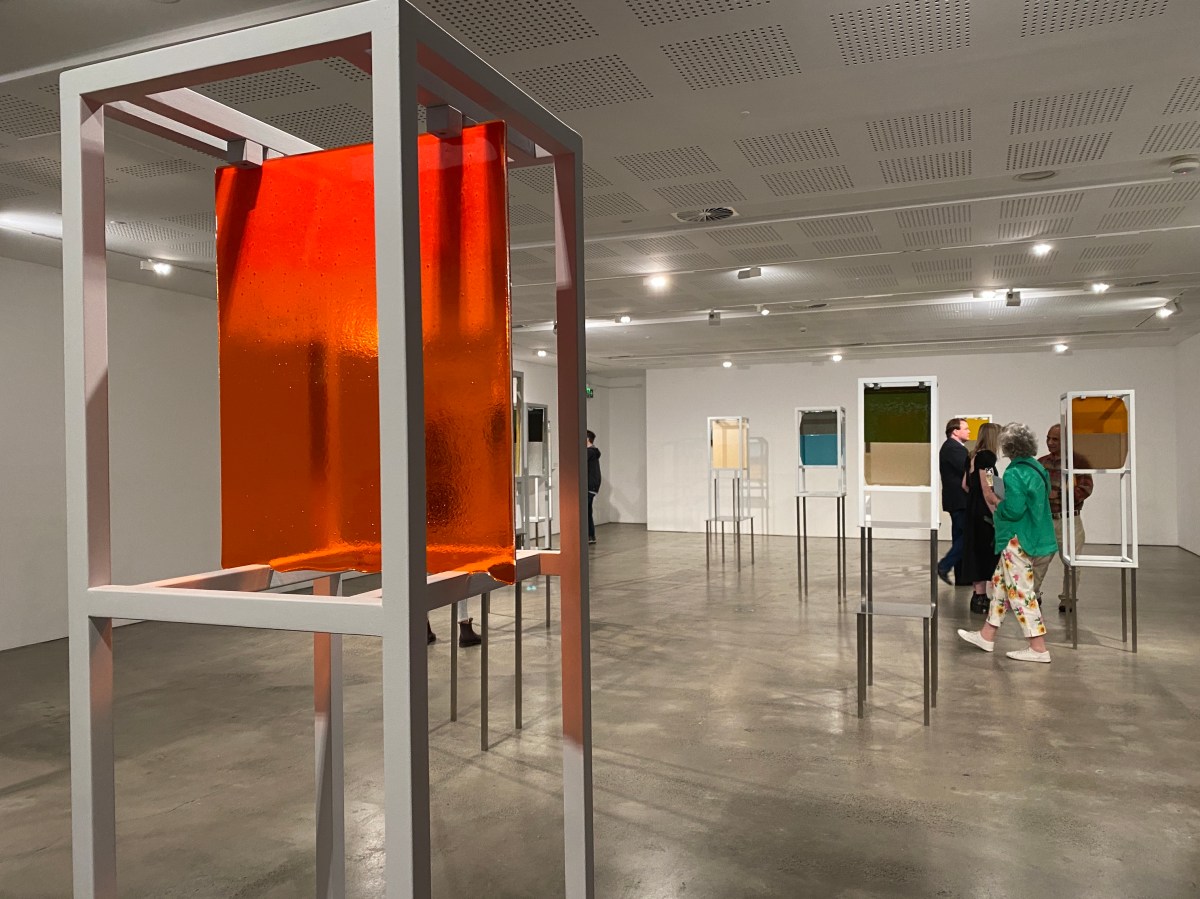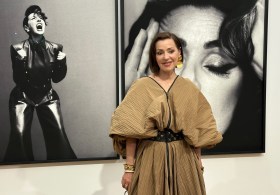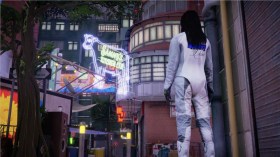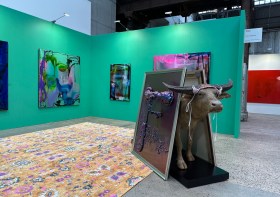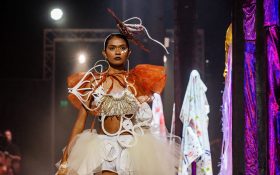UNSW Art and Design (formerly College of Fine Art, COFA) is an interesting venue to stage four concurrent exhibitions by glass artists. The art school does not offer glass as a course; its reputation is firmly based in design, media arts and rigorous conceptually-based practice.
So while it may initially feel like an anomaly, 2022 – as the UN International Year of Glass – has been a catalyst to shift perceptions and shake up antiquated pigeonholing of glass as ‘craft’.
Adding to the community of Australian glass artists today – many of whom are internationally recognised – is a swag of contemporary artists choosing to work with glass to extend their practice, in an exciting blur that is triggering a re-emergence of the medium.
This is best demonstrated by two exhibitions considered back-to-back – Canberra artist Mel Douglas’ Out of Line and Sydney-based Consuelo Cavaniglia’s through the door that holds you.
Multi award-winning glass artist Douglas is represented internationally (her UNSW Galleries exhibition is followed by a show in Venice – home to glass), while installation artist Cavaniglia has long been drawn to the properties of light and reflection associated with glass. She has only recently turned to using it as a primary medium.
This is the sweet sport of this exhibition – the medium itself. As the catalogue introduction states, these are projects that ‘explore perceptual situations, experiment with form and reflect the porous nature of identity’. It is a long way from the perceived bunkers of craft.
(Curiously, however, the exhibition opened during Sydney Craft Week. The prestigious Fuse Glass Prize is showing concurrently across town at the Australian Design Centre as its signature show for the annual craft celebration, and the Powerhouse Museum unveiled its Willoughby Bequest Commissions, three of which are glass artists paired with three ceramicists).
Four takes on glass
Visitors walk into Cavaniglia’s show – a suite of architectural forms that sit seemingly randomly across the space; within them, dual-toned panes of kiln-formed glass hover in a vertical plane. Translucency, colour, reflection, light – all the properties one associates with glass are there, but are pushed into a fresh conversation, extending the viewer.
They are exquisitely fabricated – their custom pedestals a kind of constructivist dance between stainless steel and wood; their height taking on a bodily form. They read as both windows within a built landscape – a contained form – but then are positioned at eye level so they become portals for transformation, looking out and through a play of colour and light.
They also play off the vernacular of the museum vitrine to house objects for consideration.
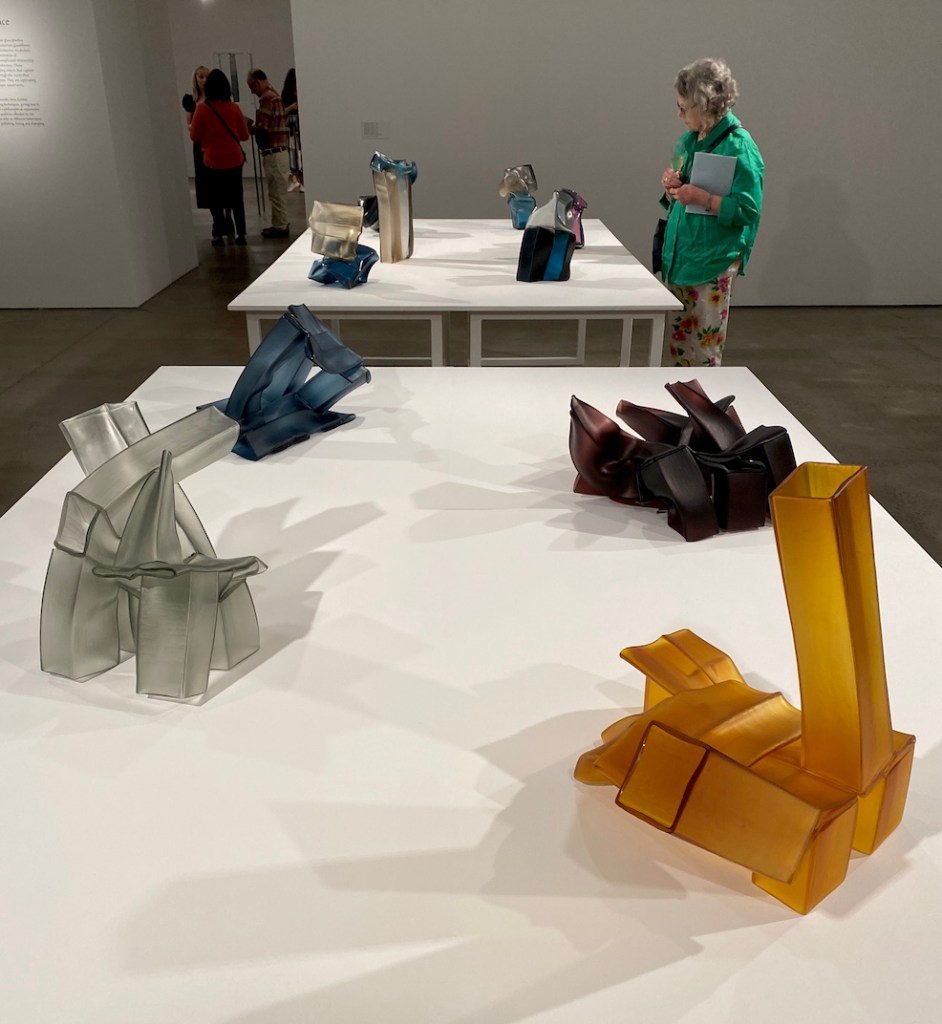
In the next gallery is the exhibition Falling into Space by Adelaide artist Liam Fleming. It is a fantastic visual segue from Cavaniglia’s presentation, with the blocky structural form of her pedestals carried across into his jewel-like sculptures that are ‘deconstructed’ by heat.
Viewers are literally witness to the transformative qualities of glass, which Fleming arrests in time and space.
Still early in his career, Fleming has already solidly created a visual language of his own. His forms are first mould blown and then stacked into the kiln in a configuration and allowed to slump into a new fused form. They are both structured and organic, weighty and light.
Fleming’s work sits across two raised fields, both quite different: one is less complex in the number of components that make up these works and is more resolved (a total cracker is the work Transitory Vessel #1, 2022), while the second pushes for more complex arrangements, some of which seem to get away from him.
The tone is maintained – and yet also dramatically changed – as viewers walk into the next gallery, which is darkened and dramatic. Again, custom pedestals complete this presentation, linking these three shows and pushing against their formality.
Central to Douglas’ show is Tonal Value (1-9), 2019 – an example of the vessels that have become signature to her career. Nine vessels march in a line moving from white to black. They are blown first in the hot shop, then cold worked with hand-drawn lines that surface them with a frenetic spun feel. They sit at slightly different angles, appearing casually placed, but are anything but carefree in their making.
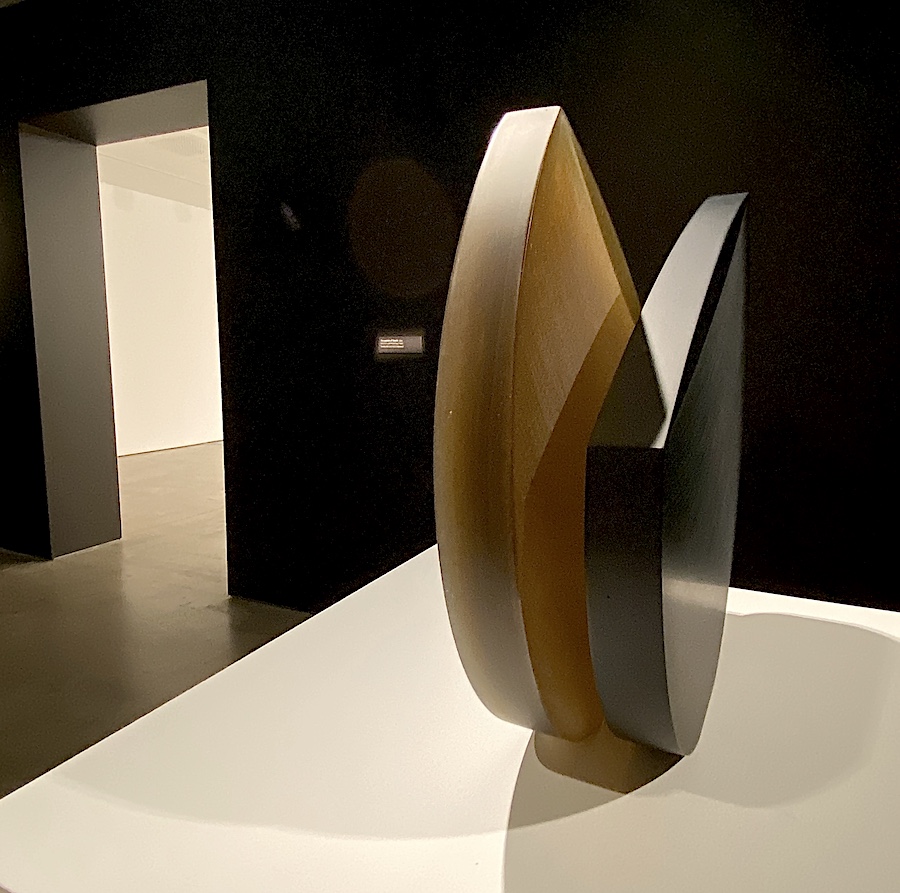
Just as Cavaniglia uses glass to extend the conceptual journey in her work, Douglas uses the medium as a drawing practice. Both are incredible makers, who have built their careers on honing technique, constantly testing, and pushing with rigour and coherency that underpins their object-based practices.
Completing Douglas’ show, on a separate pedestal, is Perception of Depth (2022), which is the pairing of spliced forms that, from certain angles, appear to fuse together. It is further completed with two wall works – one, Lumen I and II (2022), is an absolute knockout piece that seemingly glows from within – its zip line playing with the qualities and illusions of light and art histories.
The fourth exhibition is in a separate gallery space and is the least resolved of the four. In contrast to the other shows, Louis Grant’s awash moves across styles and techniques, giving a sense of being studio experiments in technique rather than a cohesive body of work for exhibition.
While he delivers with the work, don’t want no other shade of blue, but you (2022) – a grid of 15 glass panels that move through a subtle tonal range, delicate and considered – the neon text work, guess I’m feeling unmoored (2022) (fabricated by David Cooper) leaves one questioning ‘why?’ and feels very neon 101.
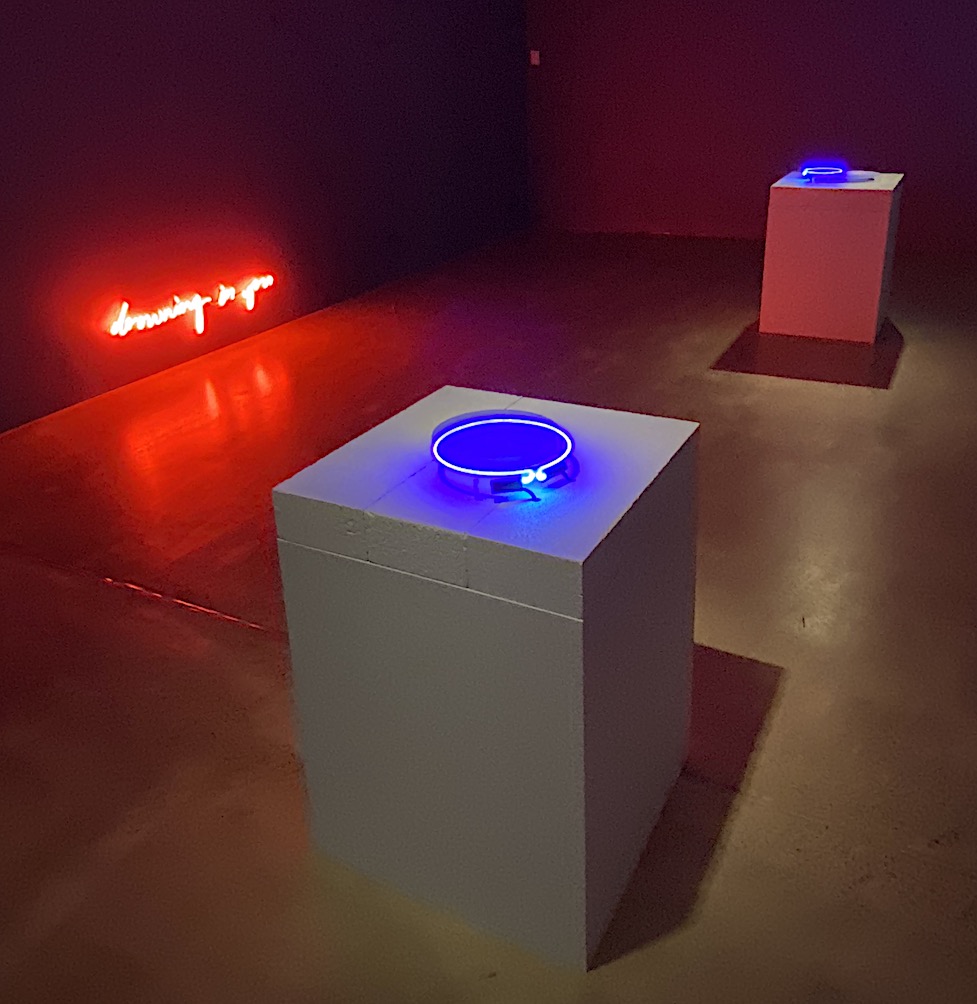
More emerging in his career trajectory than the other artists, this is a great opportunity for Grant, but if feels as if it has overwhelmed him a little, with a lack of clarity across the body of works and the scale of pieces not always working.
Additional to the panel piece, Grant includes another small wall piece and two pedestal works that play with the combination of neon, sheet glass and textured materials – a play on which he has been working for some time with success – and also a new minimal wall piece that is a lucky experiment using bicarbonate of soda on glass, but its subtlety is also out of sync with the gyrating demand of neon.
Collectively, this is a great exhibition model to present four glass artists – with the link being they all either consistently work from, or have completed residencies in, the Canberra Glassworks.
It is this experimenting and honing of a studio practice – regardless of material – that is also the progenitor here, reminding artists (especially when seated within an art school gallery) to find their own language, to be brave in their making and constantly push forward in their embrace of materials – whether new or old.
Consuelo Cavaniglia, Mel Douglas, Liam Fleming, Louis Grant
UNSW Galleries
15 October – 27 November
Free
